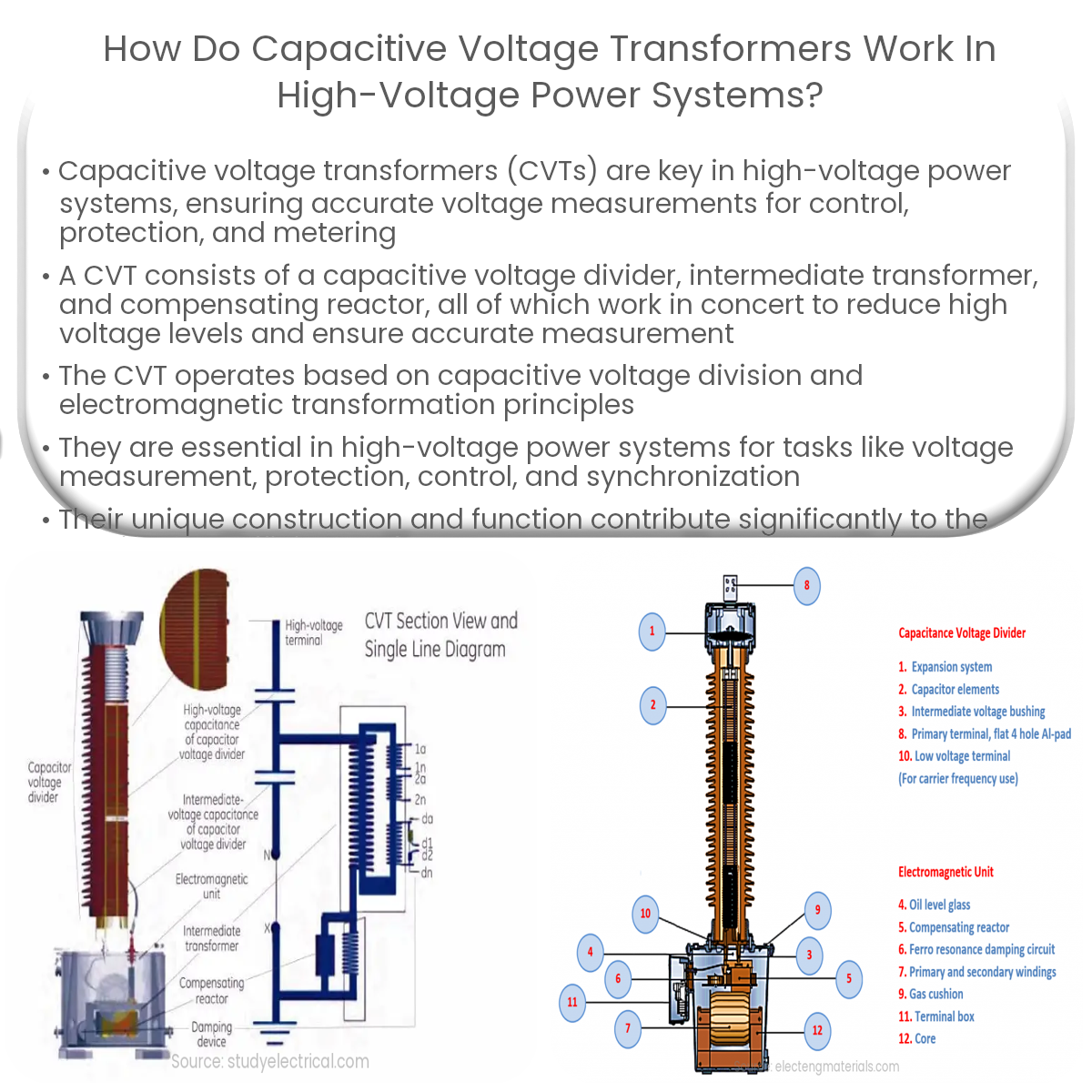CVTs work in high-voltage power systems by dividing high voltage using a capacitive divider, then lowering it via an intermediate transformer for measurements.
Working of Capacitive Voltage Transformers in High-Voltage Power Systems
Capacitive voltage transformers (CVTs) are essential components in high-voltage power systems, providing accurate voltage measurements for metering, protection, and control purposes. This article discusses the working principle of CVTs in high-voltage power systems and their role in maintaining system stability and efficiency.
Construction and Components of a CVT
A CVT comprises three main components:
Working Principle of a CVT
The CVT operates based on capacitive voltage division and electromagnetic transformation principles. The high voltage applied to the CVT is divided by the capacitive voltage divider, resulting in a reduced voltage that is proportional to the primary voltage. The reduced voltage is then further lowered by the intermediate transformer, producing a low voltage output suitable for metering and protection equipment.
The compensating reactor plays a critical role in the accuracy of the CVT. It compensates for the capacitive current drawn by the capacitive voltage divider, ensuring that the voltage transformation ratio remains constant over a wide range of load conditions and frequencies.
Applications of CVTs in High-Voltage Power Systems
CVTs serve several essential functions in high-voltage power systems, including:
In summary, capacitive voltage transformers play a vital role in high-voltage power systems by providing accurate voltage measurements and contributing to the overall stability and efficiency of the system. Their unique construction and operating principle make them a preferred choice for high-voltage measurement tasks in modern power systems.


